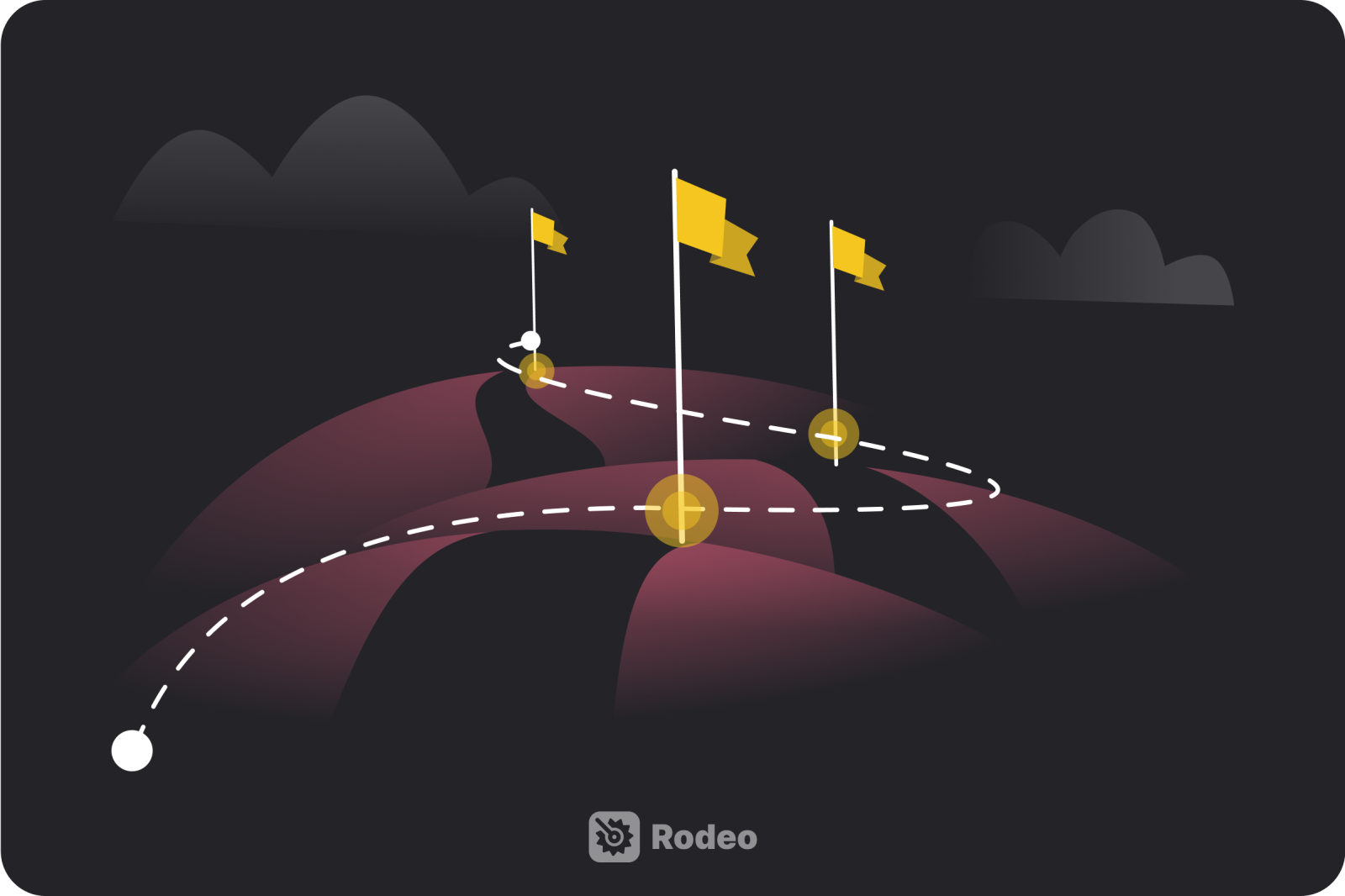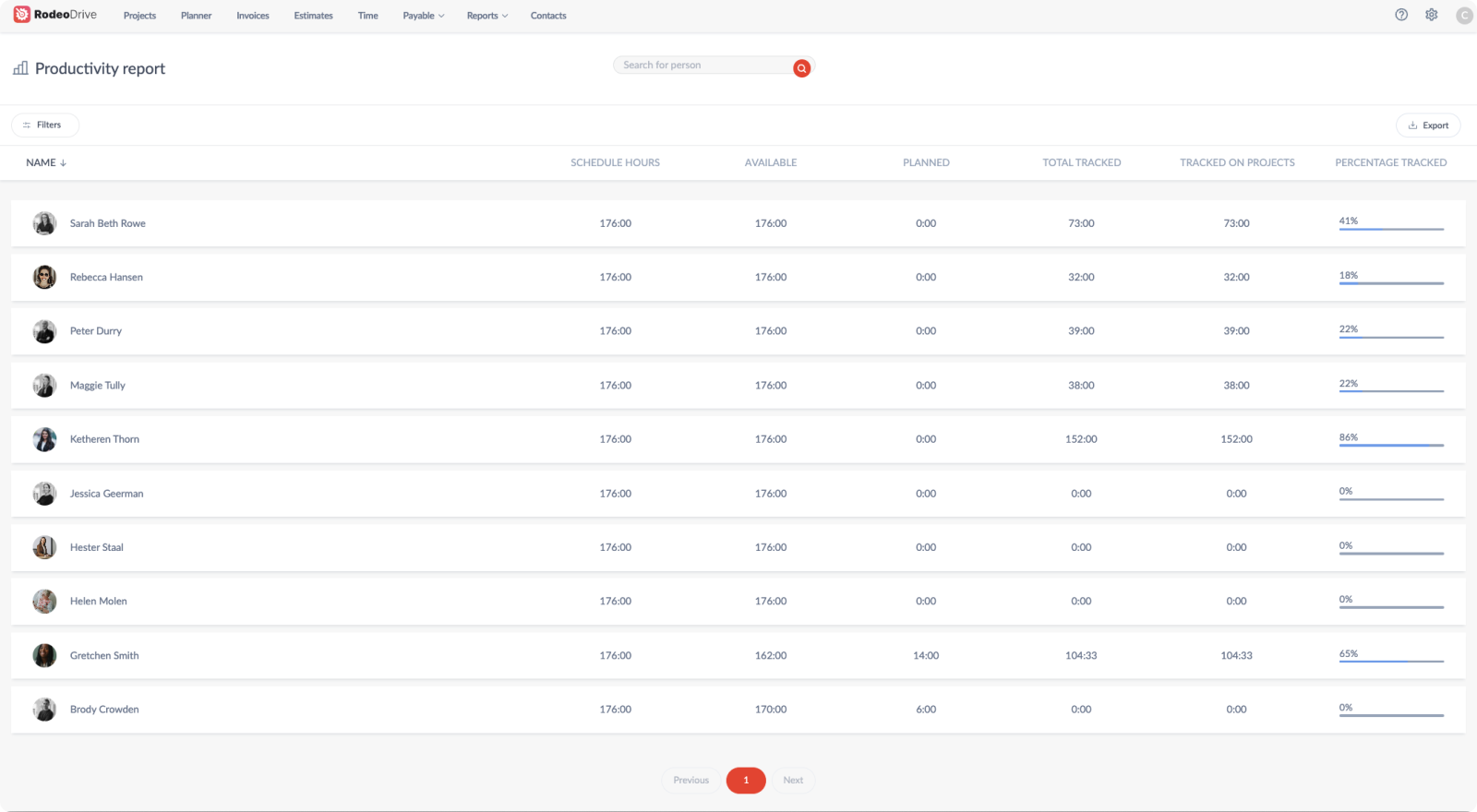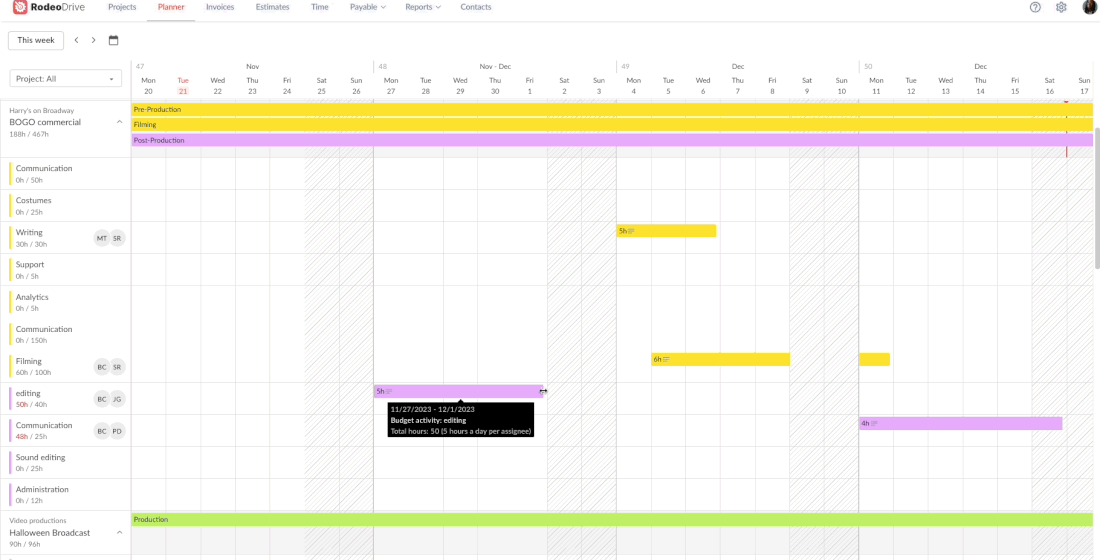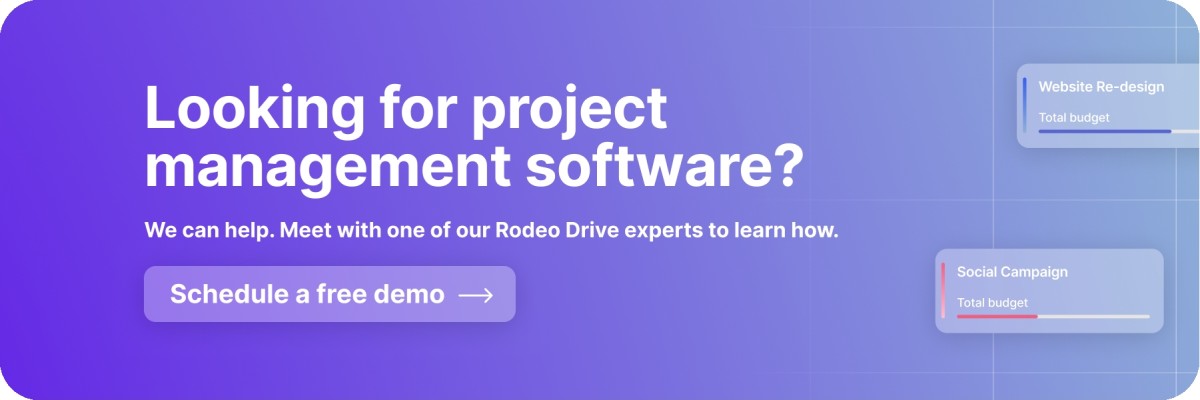Goals vs. Objectives: Is There a Difference?
Is there a difference between goals and objectives? The short answer is yes! Contrary to popular belief, goals and objectives are not the same thing.
There are numerous goal-setting frameworks out there including the popular SMART, OKRs, and B.H.A.G approaches. Regardless of the goal-setting framework your team uses, it’s important to be familiar with the differences between goals and objectives.
In this blog, we’ll help clarify the definition of each, the different types of goals and objectives, examples, and best practices. Let’s begin.
What is the difference between a goal and an objective?
Although goals and objectives work together, the traditional goal and objective relationship is different.
For starters, a goal is an achievable outcome that’s typically broad and more long-term. The idea is that goals provide direction and focus for your team. It’s also common for projects to have several goals ranging in scope and feasibility.
On the other hand, an objective consists of the specific and measurable actions that must be taken to achieve the larger goal. Objectives are typically more short-term as a result.
So when it comes to differences between the two, think of your goals as the thing that guides the direction of your project, and your objectives as the steps you need to take toward that direction or goal.
Take a look at this table for more insight on the differences between the two:

Note that, in this blog, the definition of goals vs objectives is focused on traditional goal-setting. When opting for a modern goal-setting framework such as the Objectives and Key Results (OKRs) approach, there is a shift in how objectives are defined.
In the OKR framework, objectives are comparable to traditional goals. They are high-level, qualitative, and ambitious statements that set a clear direction. This approach is accompanied by key results, which are specific, measurable, and time-bound metrics to quantify and track progress toward the objective (or goal).
Related: How to Set Marketing OKRs in 10 Steps
Goal vs. objective: Which one comes first?
Goal setting should always come first in your strategic planning processes as your goals must align with the company’s mission statement first and foremost.
Once these goals are set, your team has a clear direction to work toward, which makes it easier to set objectives. Your objectives are what allow you to execute your goals in a manageable way.
Common types of goals
There are many different types of goals available to your team, each of which is focused on different characteristics and end results. The right one for your team entirely depends on what you want to achieve.
Below, is an overview of the most common types of goals to help you decide which type you want to set.
1. Outcome-oriented goals
Outcome-oriented goals are focused on what your project or business aims to achieve. Because these goals are solely focused on outcomes, they may not come with a timeline.
Adopting an outcome-focused approach can be beneficial in encouraging your team to visualize their efforts and incentivize them to achieve those outcomes. As a result, these types of goals are often used in companies that are focused on growth.
Your supporting objectives for outcome-oriented goals will help specify the way that your team measures success and may also provide context on when this goal should be achieved.
Increasing customer satisfaction by 30% by the end of the year could be considered an outcome-oriented goal since the focus of the goal is on increasing satisfaction, and the processes that you’ll use to do so will be outlined in your objectives.
2. Time-bound goals
Time-bound goals must be completed within a specific time frame, which means they always come with a specific deadline. This goal type should be used when dealing with urgent tasks, as it improves team accountability and focus.
For example, the goal of increasing sales by 20% by the end of Q3 is time-bound with a clear deadline.

3. Process-oriented goals
Process-oriented goals are centered around a desired action or behavior rather than a desired outcome or timeline. These goals typically represent individual actions or behaviors team members can introduce themselves.
Consider implementing process-oriented goals when your team is experiencing a transition period or is looking to enact new workflows, as these goals can help build new habits among your team.
For instance, a process-oriented goal might be to increase the amount of time the marketing team spends interacting with customer content on social media every day. This is process-oriented because your goal is to increase the amount of time invested in a particular activity.
Also read: How to Effectively Manage Marketing Campaigns
4. Growth goals
Growth goals are very similar to outcome-oriented goals, but the latter isn’t always focused on growth. Comparatively, growth goals are always focused on building a future with increased profits, market expansion, or other markers of positive development.
For example, increasing your company’s annual net profit margin by 15% over the next fiscal year would not only be considered an outcome-based goal but also a growth goal.
5. Milestone goals
Milestone goals are extremely similar to time-bound goals, although they’re centered around major business milestones rather than arbitrary deadlines or timelines.

A milestone goal might look something like the goal of completing the development of a minimum viable product (MVP) within three months. This constitutes a milestone goal because it represents a critical step in a project, and the objectives will all work toward this goal.
Related: How to Create a Project Timeline: Essential Steps for Success
Common types of objectives
There are several different objectives you can use to support your business goals, each of which has a different purpose. Below, we’ll cover three of the main objective types you should be aware of.
1. Strategic objectives
Strategic objectives are used to help align efforts with a company or project’s larger strategic plan. As a result, strategic objectives are the most similar to goals, as they describe more large and long-term endeavors than other types of objectives.

Strategic objectives typically consist of tasks that directly align or relate to strategic plans or goals. Because these are strategy-focused, they’re usually set by executive leadership or project directors.
2. Tactical objectives
Tactical objectives are short-term tasks and other deliverables that support higher-level goals. Tactical objectives should be specific and measurable, and like all objectives, they should inch your team closer to the completion of your goals.
Because tactical objectives tend to be task-based, they can be set by program managers, project managers, or people in other leadership positions.
3. Operational objectives
Operational objectives are the most short-term objective type that involves breaking goals down into specific daily activities. Because these activities are so simple and short-term, they are also the easiest to measure and manage, making operational objectives optimal for performance tracking.
How to properly measure goals and objectives
The way that you go about measuring your goals and objectives might depend on the performance reporting systems your team already has in place.
In general though, here are three best practices you’ll want to follow:
Regularly track your data
Outside of your goals and objectives, establishing KPIs is one way to ensure that your team is meeting performance expectations. KPIs — also known as Key Performance Indicators — help you determine whether your team’s data is in line with industry standards and other benchmarks.
That said, you don’t even need a KPI system in place to make regular data tracking worth your while. Checking in on your team’s progress regularly will help you identify areas where your team is lacking and quickly make adjustments before it threatens your project entirely.
For example, the following productivity report in Rodeo Drive will highlight exactly how many hours each employee is working on projects, allowing you to identify ways that their time might be better spent.

Set up a monitoring schedule
Monitoring can easily fall by the wayside when you’re busy working on your objectives. This is why implementing a schedule for monitoring performance and project data can be a helpful strategy for project managers.
For instance, blocking time in your calendar biweekly, monthly, or even quarterly to see how your team’s progressing toward their goals helps ensure that you won’t forget to check in.
Related: How to Visualize Project Progress
Compare your performance against previous performances or projects
It’s sometimes tricky to know if your performance is adequate without data to compare it to. Looking at the performance of similar previous projects is a good way to gauge whether your results so far are up to par.

This practice is especially useful when working toward process-oriented goals, as being able to look back on previous performances can help shape your current objectives and improve efficiency along the way.
Aligning goals and objectives
Below are a few examples illustrating how different goal types can be organized in various ways. Note that all of these business goals can be supported by any type of objective that we’ve already covered within this blog.
Example 1: Brand awareness
Outcome-oriented goal: Substantially increase brand awareness within the next 12 months.
- Supporting tactical objective: Increase our Instagram following by 250 followers by the end of Q1.
- Supporting operational objective: Post one TikTok every day.
Example 2: Email marketing
Process-oriented goal: Optimize the team’s email marketing process to enhance the efficiency and effectiveness of campaigns.
- Supporting strategic objective: Launch a new biweekly newsletter that’s aligned with our company’s new branding and mission by the end of next quarter.
- Supporting tactical objective: Increase average email open rates by 25% in 6 months.
Tip: Check out our comprehensive guide on designing a strategic marketing plan for more guidance on executing marketing campaigns.
Example 3: Product development
Time-bound goal: Successfully launch new product features by the end of Q4.
- Supporting strategic objective: Interview 150 current product users to determine what new features they want to see.
- Supporting operational objective: Successfully conduct 2 design sprints per month to build out the new feature offerings.
5 steps to set goals and objectives
How should you go about setting business goals and objectives? Well, there isn’t an easy answer to this question. But let’s walk through five steps to get you started.
1. Decide which desired outcomes are most necessary
Goal-setting is pointless if your team lacks a clear vision and direction for the future. Before you even begin brainstorming goals, it’s critical to assess what you most want to accomplish. Is your company focused on financial growth or employee satisfaction?
If you’re setting goals for projects, consider what key outcomes the client or internal stakeholders are expecting to achieve. What does each desired outcome look like from a goal perspective?
Finding answers to these questions might require collaboration among team members or the client to nail down a vision that everyone’s satisfied with. From there, you can focus on what needs to be done to achieve them.
2. Identify broad, long-term goals
The next step is to convert each desired outcome into its own goal. Recall that these goals should be broad and long-term in scope, and as a result, you’ll only want to pursue a few goals at one time. In the previous step, you likely identified a handful of outcomes that you’d like to achieve. It’s important to prioritize these when goal setting and keep your sights set on the ones that will have the greatest impact on your organization or project’s success.
3. Break your goals down into actionable objectives
As we’ve already discussed, your goals should be broad and long-term, and your objectives should be narrow and short-term activities that will enable your team to progress toward your goals.
Think of your objectives as your plan of action. What steps need to be taken to achieve your goals? How will you measure your team’s progress along the way? The objectives you set here might be teamwide or on the individual level.
4. Consider the SMART framework
While it’s helpful to have goals that adhere to the SMART framework, it’s critical that your objectives are also SMART. This means they must be specific, measurable, attainable, relevant, and time-bound.
Objectives that fail to meet these criteria will be extremely difficult to achieve, which will damage your team’s ability to deliver results on the goal level. Having measurable objectives is particularly important, as this is what allows you to gauge whether your team is on track to achieve them.
5. Begin executing and monitoring your team’s progress
So, your goals are documented and your SMART objectives are all set up — now what? Well, that means it’s time for the real work to begin.
Executing your plans can be tricky, which is why proper monitoring and progress reporting is so important. Having a project management tool to assist with the tracking process is a must-have for many teams to help ease the burden.
Stay on top of your goals and objectives progress with Rodeo Drive
Tracking your team’s performance without a project management tool to help can feel like an impossible task. Rodeo Drive is here to help.
Our tool provides teams with the features they need to build budgets, plan project activities, track time, and access reports, among many other features.
These features are critical in setting objectives, as the ability to assign activities and track time toward those tasks will help significantly in tracking your team’s progress. Plus, the project budgets you create in Rodeo Drive will update automatically to reflect your spending as your team members track their time on the platform.

After all, how can your team ensure that your goals and objectives are in alignment if it’s unclear what everyone’s working on?
The best part is that Rodeo Drive compiles three different automatically generated reports based on your team’s usage of the tool to bring you immediate insights. These include reports on your overall project financials, time registration, and employee productivity.
.png)
You’re also able to export your reporting data as an Excel or CSV file, should you want to compile your own custom reports outside of Rodeo Drive.
Why not come try the tool for yourself? Sign up today — you don't even need to enter a credit card.








